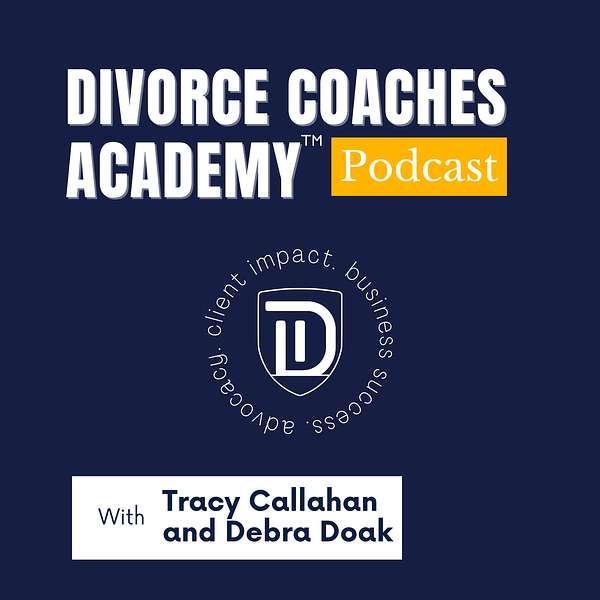
Divorce Coaches Academy
Divorce Coaches Academy podcast hosts Tracy Callahan and Debra Doak are on a mission to revolutionize the way families navigate divorce. We discuss topics to help professional divorce coaches succeed with clients and meet their business goals and we advocate (loudly sometimes) for the critical role certified divorce coaches play in the alternative dispute resolution process. Our goal is to create a community of divorce coaching professionals committed to reducing the financial and emotional impact of divorce on families.
Divorce Coaches Academy
The Triangulation Trap: Guiding Parents Out of Destructive Patterns
Send Us a Message (include your contact info if you'd like a reply)
When children become pawns in their parents' divorce battles, the emotional damage can last a lifetime. Triangulation—the process where children are drawn into parental conflict—affects over 80% of high-conflict divorces and significantly increases children's risk for anxiety, depression, and relationship difficulties well into adulthood.
In this compelling deep dive, Debra and Tracy unpack the three distinct forms of triangulation that plague divorcing families. They explore how children become direct participants in conflict when used as messengers or interrogated about the other parent's home. They reveal the subtle yet equally harmful pattern where children feel caught in the middle even when parents believe they're shielding them from tension. And they examine the most damaging form—when parents deliberately draw children into coalitions against the other parent through criticism, loyalty tests, and false narratives.
What makes this conversation particularly valuable is the practical coaching framework offered for helping parents recognize and break these destructive patterns. Through awareness-building questions, perspective-shifting exercises, and concrete strategies—from establishing direct adult communication to creating emotional safety zones—listeners gain tools to guide families toward healthier dynamics. The powerful question at the heart of this work resonates throughout: "Do you want to give your children a child-centered divorce or a divorce-centered childhood?"
Whether you're a divorce professional working with high-conflict families or a parent navigating co-parenting challenges, this episode provides insight into transforming harmful patterns into opportunities for healing. Because when parents take accountability and keep children out of adult conflicts, they're not just breaking a cycle—they're building resilience that will serve their children for years to come.
Learn more about DCA® or any of the classes or events mentioned in this episode at the links below:
Website: www.divorcecoachesacademy.com
Instagram: @divorcecoachesacademy
LinkedIn: divorce-coaches-academy
Email: DCA@divorcecoachesacademy.com